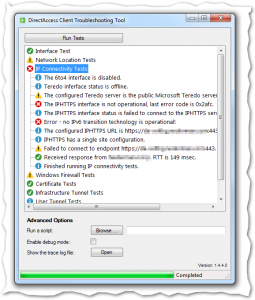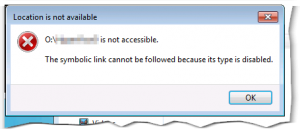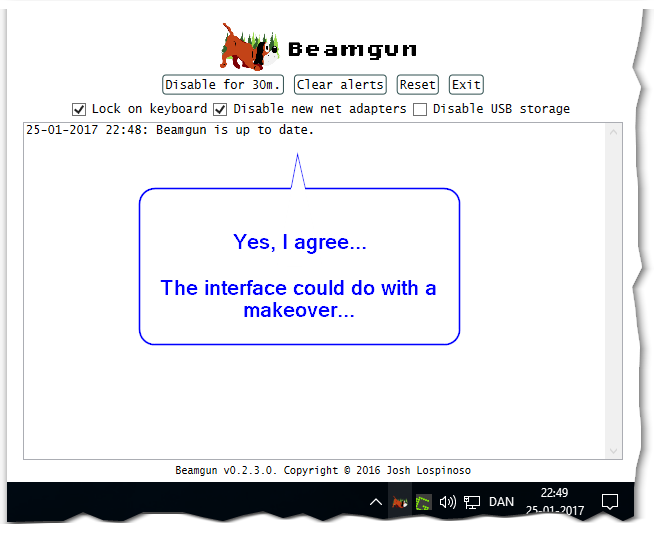Are you using WinRar? well in that case you may want to update. A security flaw has been found in WinRar that could allow malicious code to execute just by opening a WinRar file (nasty)..


Read much more on Bleeping Computers . Com
https://www.rarlab.com/rarnew.htm
Download update here;
So I found myself having to add subtitles to a videofile, however there were a few kinks. I had the .SRT file that matched, BUT the videoclip already had subtitles burned in in another language, and the .SRT subtitles were just overlaid these burned in subtitles which made both unreadable. My thought were to raise the .SRT subtitle so it was above the burned in one, however this was easier said than done, Handbrake supports importing subtitles and allow for burn in – however it does not allow for placement or other adjustments.
After a bit of googling I came up with this;

This excellent software (free) will allow you to do all sorts of things with subtitle files.
and you likely already know the video conversion utility Handbrake (also free)
https://handbrake.fr/downloads.php
What I ended up doing was;
Importing the SRT file into Aegissub
Setting the vertical offset to 50 (just above the other subtitle)
Changing the font color and border blur
Saving as an .ASS file
Opening the video file in Handbrake
Switch to the subtitle tab (4)
Import the .ass file (5)
Selecting “burn in” to make it embed into the video file (6)
And then encode the file
Viola, done and perfect result.


Many people have a laptop, and many complain about battery life – but how do you actually KNOW the overall health of your battery?

Well, I came across a usefull command that can shed at least some light on the matter.
You run the command;
powercfg /batteryreport

this in turn will generate a HTML file:
C:\WINDOWS\system32\battery-report.html
and this file actually has some usefull info. You scroll down to “Battery capacity history”


you look at the top “Design capacity” and scroll down and look at “Full charge capacity”, this will give you some indication on the overall health.
There are other “indicators” like “Battery life estimates”, however personally I put more credibility on the “Battery capacity” as the below show is “estimates”. But all in all you should in this HTML report be able to ascertain at lease some indication as to the health of your battery.

The command “powercfg” has some additional parameters you may want to mess around with as well, I have not looked closely at those however.
So we had this problem, several of our Windows 2008 R2 fileservers were running full and due to technical issues (old hardware) replacing the disks became VERY expensive.
So alternatives, I started to thing – hey, lets create an “ISCSI drive” on a remote datacenter server, mount the ISCSI drive into the directory structure as a mountpoint named “Archive” or something. Now users could put “old” archival data here, thus removing it from the server but still being available – clever 😀 A few issues crept up however, when creating an ISCSI target on a Windows 2008 R2 server this is “terminated” as a VHD file – this proved annoying (eg for backup etc), besides a friend of mine pointed out that they had tried something similar once – sadly if connectivity was sketchy this could cause the fileserver to hang as it was unable to connect to the iscsi target.
My friend however pointed out that he had had success with using “Links”, right – I have heard of these Junction points and symbolic links, but never really found any real good use for it. But it turn out you can create a symbolic link from the directory structure on one server, pointing to a share on a different server.
So eg. O:\ could have a lot of directories, however we also make a Symbolic Link there named “Archive” – if you now perform a dir you will find all the subdirectories, however you will also find O:\Archive which looks just like a directory (the icon gets a screwy arrow but thats all) however it’s not, it is instead a “pointer” to a share on a different server (this share we can easily backup and maintain).
So the command to use is;
MKLINK /D <NAME> \\<SERVERNAME>\Sharename
eg, MKLINK /D HyperVisor5 \\SECRETSERVER\aarhus
HyperVisor5 is the name the directory will get locally the /D indicate it is a directory junction, and the link will point to \\SECRETSERVER\aarhus (aarhus is the share name on the SECRETSERVER)..

Ohh that was easy you say, yeah – well – it did not work 🙁
When a workstation attempted to access a mapped drive (eg. O:\Archive) it would get the above error.
A bit of googleing let to;
https://blogs.msdn.microsoft.com/junfeng/2012/05/07/the-symbolic-link-cannot-be-followed-because-its-type-is-disabled/
And the solution was simple enough, you need to execute this command on the workstation that has the problem;
(the command above the yellow one show the state of your computer)
And now your workstation can browse the directory (which is actually a pointer to a share on a different server) just like it was on the local server.
This should also be controllable via Group Policy, however I have not had the chance to test it yet;
https://technet.microsoft.com/en-us/library/5c7ffdb9-7066-4bdf-bc7d-eded8db2ce82
The symlink evaluation settings can also be controlled via Group Policy. Go to Computer Configuration > Administrative Templates > System > Filesystem and configure “Selectively allow the evaluation of a symbolic link”.
 BeamGun – So what is it all about, and do I need it?
BeamGun – So what is it all about, and do I need it?
Well, to answer the latter first – “maybe”, if you could ever see yourself inserting a USB key you found somewhere, or if other people have access to your computer….
Background;
All modern computers have USB ports, you can attach all sorts of wonderful devices to USB ports – like mouse and keyboards, well imagine if someone made a device that looked like a USB key, however it actually emulated a keyboard – when you would plug this into your USB port it would tell your computer “Hey, I am totally a USB keyboard, honestly..”, and your computer would say “Hey that is cool, go ahead and be my second keyboard…”. So far so good, however, now this totally honest “keyboard” would start typing commands and your computer not knowing any better would think that it was you typing. So, long story short – any device looking like a USB key that is inserted into your computer has a chance to be an evil “Rubber Ducky USB” (that is the name under which many of these are actually sold), so someone either hands you a USB device and convince you to insert it (hey can you look at the report I just made) – or distracts you for a second and insert the USB device to your computer – BOOM and you are owned – in benign cases it just adds some practical joke (like switch your desktop background etc), but if evil it steals passwords etc. and it is very likely your Antivirus will not pick it up as it will look like commands issued from the local keyboard.
Sadly “no”, this is not Sci-Fi nor expensive, the script kiddie version of USB keys like this cost around 50$ but if you have real coding skills you can do it for 1-3$ 🙁
Ok, so anyone inserting a foreign USB device to your machine could be “hacking you”, or if you find an abandoned/lost USB key and insert it you may cause yourself to be hacked/compromised.
The tool;
https://github.com/JLospinoso/beamgun
BeamGun to the rescue – BeamGun is actually rather nifty, it will monitor your computer – and the moment a new “keyboard” (or something emulating a keyboard) is inserted, it will lock your computer and block the device, it will also show anything this device was trying to do in a popup window.
Mind you, it is an early version and seem a bit rough around the edges, but if you are in the “risk” group this may be a tool you would want to install. But it works (yes I tested it, however it is difficult to show screenshots as the software does a great job of protecting your computer while it display its warning).
Want to see more about these “Rubber Ducky USB” devices, take a look at this video;
https://youtu.be/4kX90HzA0FM
Something similar is also shown in the popular tv-show “Mr Robot”
Want to aspire as an evil hacker (or totally own your friends), buy your own “USB Rubber Ducky” here (yes its actually that simple);
https://hakshop.com/products/usb-rubber-ducky-deluxe
Links;
https://github.com/JLospinoso/beamgun
https://hakshop.com/products/usb-rubber-ducky-deluxe
Let’s imagine you need to turn over your old computer to friends or family, you for some reason do not wish to re-install Windows all over – well there is a middelground that I imagine could be used in case it’s close friends or relatives. Remove all your personal stuff, documents, mails etc. from the computer, remember to empty the recycle bin, clear all browser caches and clear restore points – if possible create a new user and from this delete your old user profile. Final step is to run the command below, this will wipe all free space on the disk – the command is a buildin Windows command that was introduced back in WinXP, so no need for additional software etc. Is it safe enough? Well as I say, if it is close relatives or friends it may be ok as long as you are sure that all sensetive data is removed, but I would likely not advice this for a computer you sell etc. Again, it all depends.
Command to issue;
Cipher /w:c:
(for the C: drive, replace C: with other drivelettes as you need).
 Have you ever had a USB device that for the life of you would not work properly, perhapes even only on one specific computer!? Well, sometimes it’s caused by drivers that somehow malfunction and it can be a hell to debug.
Have you ever had a USB device that for the life of you would not work properly, perhapes even only on one specific computer!? Well, sometimes it’s caused by drivers that somehow malfunction and it can be a hell to debug.
Anyhow, I stumbled across this util that promises to remove all traces of a usb device from a machine, I think I will keep this in mind for next time I experience one of these driver nightmares.
https://code.google.com/p/usboblivion/
Debugging Microsoft Direct Access can be a pain, Microsoft however did release a utility to make this a little easier..
Microsoft Windows DirectAccess Client Troubleshooting Tool
http://www.microsoft.com/en-us/download/details.aspx?id=41938
Be sure to click the “enable debug mode” before scanning to get all the juicy details.
 In the good old days you could install SUS on your “home” server and have your own Windows update repository, however after WSUS version “whatnot” the requirements for WSUS has by far outgrown what I wish to allocate on my home/test rig.. Hell I only have 3 machines and a few servers anyhow….
In the good old days you could install SUS on your “home” server and have your own Windows update repository, however after WSUS version “whatnot” the requirements for WSUS has by far outgrown what I wish to allocate on my home/test rig.. Hell I only have 3 machines and a few servers anyhow….
Never the less, when installing new test VM’s etc it would be nice to avoid all the patching since SP1 :-/ well, now you can 🙂
Martin over at Ghacks.net has reviewed an excellent utility that will do JUST that 🙂
http://www.ghacks.net/2013/01/03/windows-offline-update-8-0-released/
http://www.ghacks.net/2011/02/25/wsus-windows-offline-update-updated/
Further uses is as he describe that you can download all patches for an OS (pt. Win 7 = 1.8GB since SP1) and put it on a stick so you can patch your friends and family’s machines with minimal Internet impact.
For now I have installed the thing and tried downloading patches for Windows 7, it seemed to work flawlessly – but I will try to do some install testing and see how this works out. Looks solid enough though.
Project web site;









